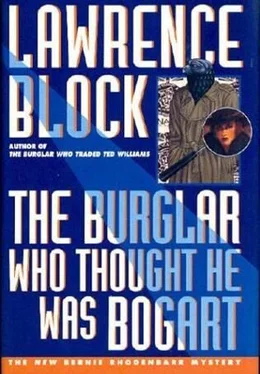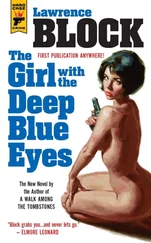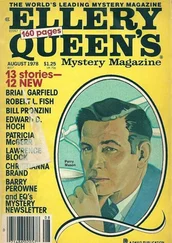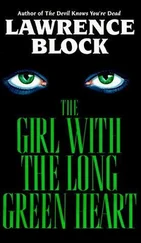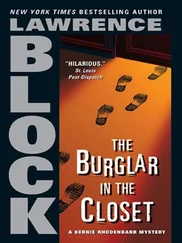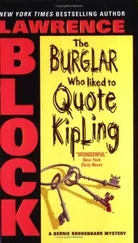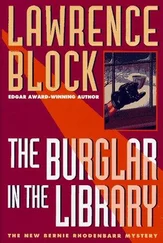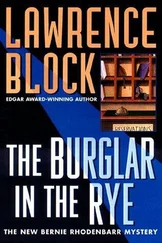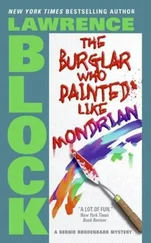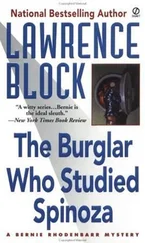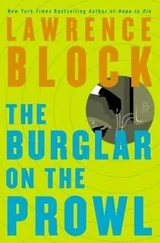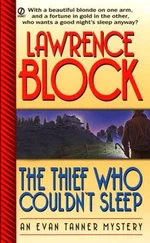But it still seems like more trouble than it’s worth.
See, that’s how thieving spoils a man.
There was a time a while back when the store began to turn a small but steady profit. What I’d begun as a combination of a respectable front and a cultured pastime was supporting itself, and looked as though it might even support me in the bargain. Before I knew it I had stopped burgling.
Well, I got over that. Prompted by a rapacious landlord, I’d saved the business by stealing myself solvent. Flush with ill-gotten gains, I’d gone and bought the building. Barnegat Books was secure, and I could run it for good or ill as long as I wanted.
And I didn’t have to pinch pennies, either, or send postcards full of price quotations to dealers in Pratt, Kansas, and Oakley, California. I could leave the bargain table where it was while I trotted around the corner, and I didn’t have to have an apoplectic fit if someone walked off with a water-damaged second printing of a Vardis Fisher novel. And when I cover expenses that’s fine, and when I don’t, well, I can always flimflam my way into a building and pick my way past a lock and pick up a quick five grand for my troubles.
Of course I hadn’t received anything for my recent night’s efforts.
And who said my troubles were over?
That happy thought sent me to the telephone, to try Ilona’s number again. No answer. I put the phone down and thought about the question Carolyn had asked me, and the answer I had given. I didn’t know if it was true, but it was close enough to be disturbing.
Reverie carried me back to that grotty little top-floor room on East Twenty-fifth Street. I found myself thinking about the man in the photograph. Where the hell had I seen him before?
He wasn’t the same man as the fellow in the stiff family portrait. I was pretty sure of that. For one thing, the guy with his arm around the huge-haired lady would never be that rigid, not even after rigor mortis had set in. He was used to having his picture taken. The way he was beaming, he looked as though he thrived on it.
I frowned, as if that would bring the photograph into sharper focus. The woman, I remembered, had shoulders like a halfback. But she didn’t get them on a football field, or in a gym, either. She was wearing shoulder pads, even more exaggerated than the ones that had blossomed anew in the recent shoulder-pad renaissance.
You weren’t seeing shoulder pads as much lately. And you weren’t seeing silver fox stoles either, the kind she was wearing with little heads and feet still attached. They hadn’t experienced a revival, as far as I knew, and I could understand why.
Probably an old photo. Notes from the world of fashion notwithstanding, it had looked like an old photograph to me. Was it because cameras were different then? Had the print faded with time? Or was it just that people composed their faces differently in different eras, so that their faces were indelibly marked as if with a date stamp?
He was a crowd pleaser, this Smilin’ Jack. A credit to his dentist, too. Damn, where had I seen his beaming countenance before? And what would he look like if he covered those big teeth with his lips and took a serious picture?
He had a face that would look good on a coin, I decided. Not an old Roman coin, his wasn’t that sort of face. Something more recent…
Bingo.
I don’t think I said anything, but maybe my ears perked up, because Raffles leaped from his perch over in Philosophy amp; Religion and came out to see what was going on. “Not a coin,” I told him. “A stamp.”
That seemed to satisfy him; he did a set of stretching exercises and trotted off to the john. I found my way to Games amp; Hobbies, where there was a Scott’s world postage stamps catalog on the very bottom shelf, right where I’d last seen it. It was four years out of date but too useful a store reference to consign to the bargain table.
I carried it to the counter and flipped pages until I found the one I was looking for. I squinted at an illustration, then closed my eyes entirely and compared it to the picture in my memory.
Was it the same guy?
I thought it was, but it was hard to be sure. Postage stamps are illustrated in black and white in the catalog, and at less than half their actual size. Years ago there was a federal regulation in the United States requiring that an illustration of a postage stamp be broken by a horizontal white line, so that unscrupulous persons couldn’t cut them out of the book, paste them on envelopes, and defraud the government. Nowadays, when a ten-year-old can run off color Xeroxes of twenty-dollar bills that will make it past your average bank teller, that old rule has been discarded as obsolete, and it’s now legal to illustrate postage stamps as realistically as you wish, and to print actual-size photographs of U.S. currency.
The more recent stamp illustrations don’t have the white lines, but the catalog people haven’t troubled to rephotograph all the earlier issues, and the stamps I was looking at were of that sort, having been issued over seventy years ago. I tilted the book to get all I could from the light, and I squinted like the first runner-up in a gurning competition, and finally I went to my office in the back and looked through drawers until I found the magnifying glass.
Even with the glass, the results were not anything you’d want to go to court with. Of the series of fifteen stamps, the folks at Scott had chosen to illustrate only four. Three showed local scenes, including a church, a mountain, and a gypsy leading a dancing bear on a leash. In each of these, an unsmiling version of the man in Ilona’s photograph gazed at you from a circular inset in the upper right corner.
The fourth stamp shown was the 100-tschirin stamp. (The nation’s currency was based on the tschiro, and each tschiro was worth a hundred dikin. The cheapest stamp was a single dik. It’s remarkable how much you can learn from a postage stamp catalog, even an outdated one, and of how little value the information is.) The 100-tschirin stamp was the high value of the series, and it differed from its fellows in two respects. It was larger, about one and a half times their size, and it was vertical in format, taller than it was wide. And the portrait of Ilona’s buddy, instead of being confined to a little porthole up in one corner, filled the entire stamp.
Hard to be sure. The reproduction, as I’ve said, left a lot to be desired. And I didn’t have the photograph with me, just my memory of the photo, glimpsed briefly in the dim and flickering light of a single candle. So I couldn’t swear to it, but it certainly looked to me as though this was the man.
Vlados I, the first-and so far the only-king of Anatruria.
For a minute there it looked like I was on to something.
My God, I thought, it all tied together. Ilona wasn’t just someone who wandered in to buy a book. It wasn’t sheer coincidence that, of all the bookstores in all the towns in all the world, she walked into mine. It was all part of-
Part of what?
Not part of the abortive burglary, and not part of the death of Hugo Candlemas. Because what did Anatruria have to do with all that, or that with Anatruria? Nothing. Ilona had a photo of the erstwhile king of Anatruria in her room, just as she had a map on her wall with the country’s purported borders outlined thickly in red. And why not? She was an Anatrurian, and she might well be a patriotic one, though not without an ironic sense of the comic-opera aspect of it all.
Was there a coincidence? It seemed to me there had to be a coincidence, but I couldn’t spot it. What gave it all a touch of the dramatic, at least at first glance, was that it had taken me something like sixteen hours to figure out why the guy with the big smile looked faintly familiar. If I’d recognized him on the spot, I wouldn’t have given it a second thought. “Oh, there’s King Vlados, I’d know him anywhere, even in the apartment of one of his loyal subjects.”
Читать дальше
